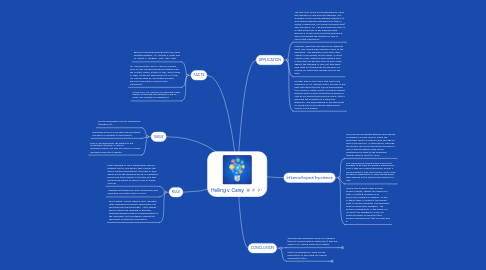Helling v. Carey
por Emily Horwath


1. RULE
1.1. Duty/Standard of Care: established contract between doctor and patient that requires the doctor treating the patient to the best of their ability and to the standards set by accreditation boards and other experts in the field, and that requires the patient to agree to pay for these services
1.2. Negligence/malpractice: duty established, duty breached, proximate cause of injury
1.3. Strict liability: liability without fault, damages often awarded according to which party can best bear the financial burden. Strict liability aims to lessen the suffering of plaintiffs, awarding damages without assigning blame to the defendant, but nonetheless making the defendant compensate the plaintiff.
2. ISSUE
2.1. Did the defendants commit malpractice (negligence)?
2.2. Were their actions in line with the acceptable standard of care/duty to the patient?
2.3. Even if the defendants did adhere to the acceptable standard of care for ophthalmologists, are they still liable to provide damages under strict liability?
3. FACTS
3.1. Barbara Helling had been going to the same ophthalmologists--Dr. Thomas F. Carey and Dr. Robert C. Laughlin--from 1959-1968
3.2. Ms. Helling visited once in 1959 for myopia, once in 1963 complaining about irritation from her contact lenses, 3 times in 1967, and 5 times in 1968. At her last appointment in Oct 1968, Ms. Helling, aged 32, was diagnosed with glaucoma resulting in serious vision impairment.
3.3. At this time, Ms. Helling consulted with other experts in the field and decided to sue Dr. Carey and Laughlin for negligence.
4. Influence/Impact/Importance
4.1. This case as a precedent extends strict liability coverage to include cases in which the defendant suffers a medical injury through no fault of the doctors. In other words, although the doctors did not act below the standard of care in their profession, they would nonetheless be liable to the defendant (liability without fault) for injury.
4.2. This ruling would make doctors much more available to be sued for "medical malpractice" even if they did nothing technically wrong. If the precedent in this case prevails, doctors will be liable to defendants in cases during which they adhered to the professional standard of care.
4.3. Typical strict liability cases include: product liability, liability for livestock or dogs, or putting someone in an abnormally dangerous situation. In any of these cases, in order for the injured party to receive damages, the defendant need not have been negligent. The system is designed to, in the event of a "no fault"/"no negligence" injury, lay financial burden on the party (aka product manufacturer) that can best bear it.
5. APPLICATION
5.1. The trial court found for the defendants, citing the standard of care was not breached. The standard of care among ophthalmologists is to start testing regularly with glaucoma (with a simple, inexpensive, non-invasive pressure test) after the age of 40. The defendant was only 32 in 1968 at the time of her diagnosis with glaucoma, so the court found the defendants had not breached the standard of care or committed malpractice.
5.2. However, when the case went to an appellate court, this finding was reversed in favor of the defendant. The appellate court cited Strict Liability as precedent for this ruling. In Strict Liability cases, liability is given without fault. In this case, the doctors may not have acted against the standard of care, but they were held liable to compensate an individual, Ms. Helling, for irreversible damage done to her eyes.
5.3. Another take on the case is that due to the frequency of Ms. Hellling's visits, and due to the ease with which the test can be administered (non-invasive, cheap, quick), it could be argued that the doctors did act below the standard of care by not administering such a simple test to eliminate the possibility of a glaucoma diagnosis. The administering of the test earlier on would have prevented the degenerative effects of the disease.
6. CONCLUSION
6.1. Although the defendants were not negligent (did not commit medical malpractice), they are liable to Ms. Helling under strict liability.
6.1.1. Service Offer
6.1.1.1. What are we selling?
6.1.1.2. Product Definition
6.1.1.3. Pricing
6.1.1.4. Packaging
6.1.1.5. Positioning
6.1.2. Value Proposition
6.1.2.1. What is the Value Proposition to the Customer?
6.1.2.2. What pain are we solving?
6.2. Other Considerations: What are the implications of this ruling for medical malpractice suits?
6.2.1. M&A?
6.2.2. Risk Analysis & Mitigation
